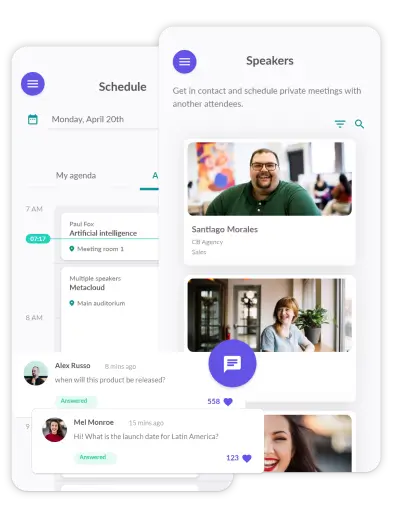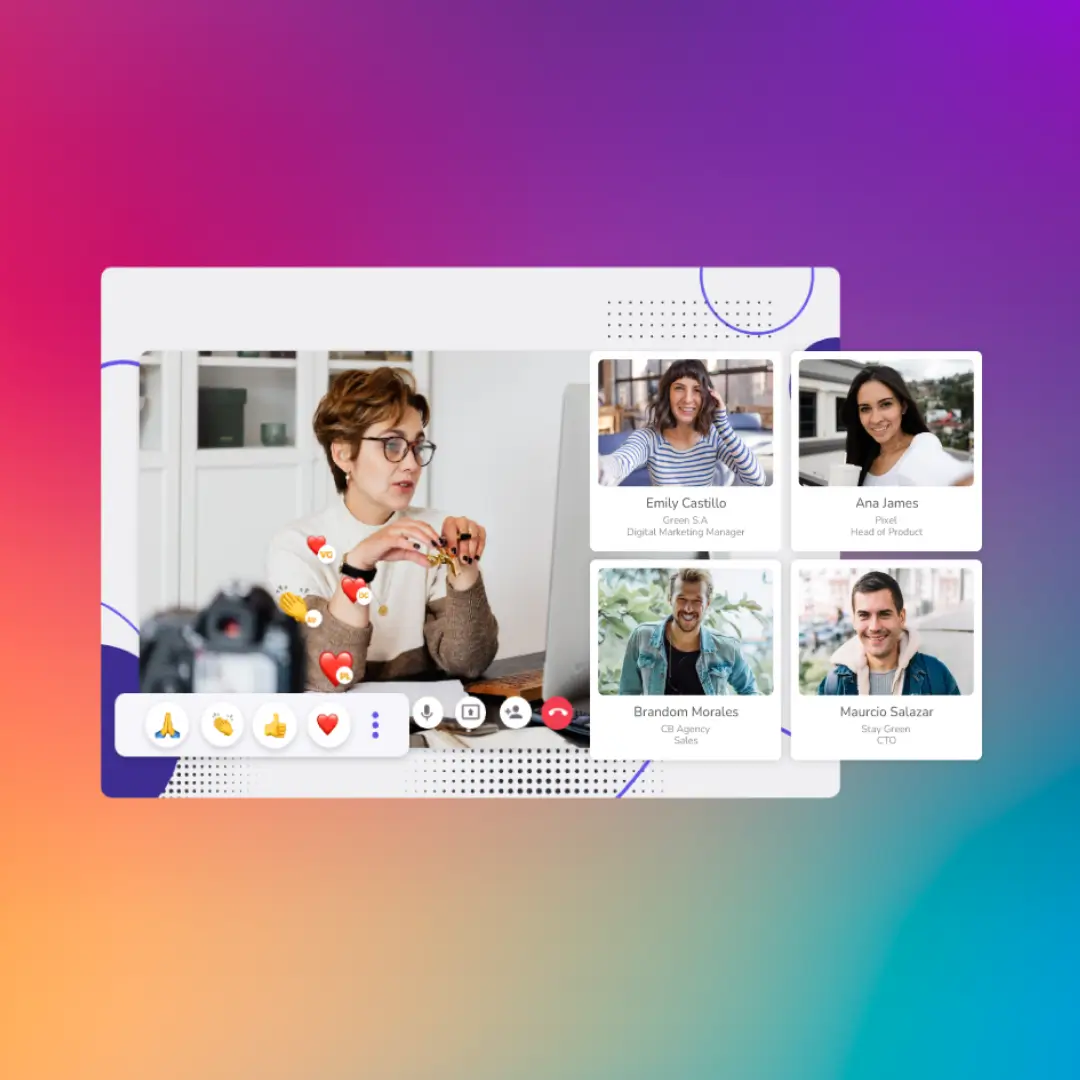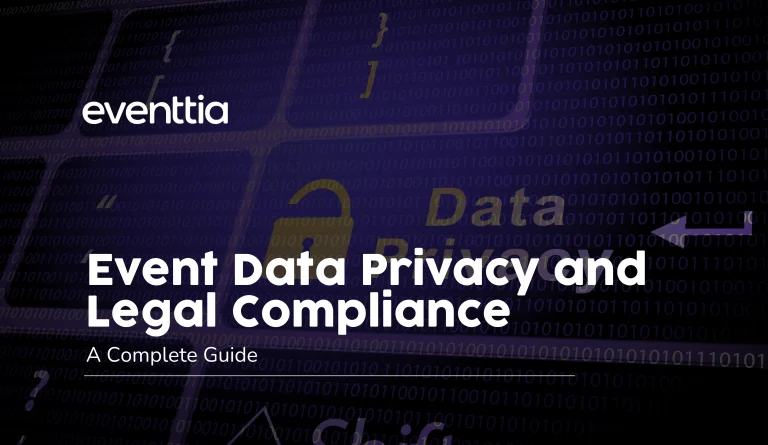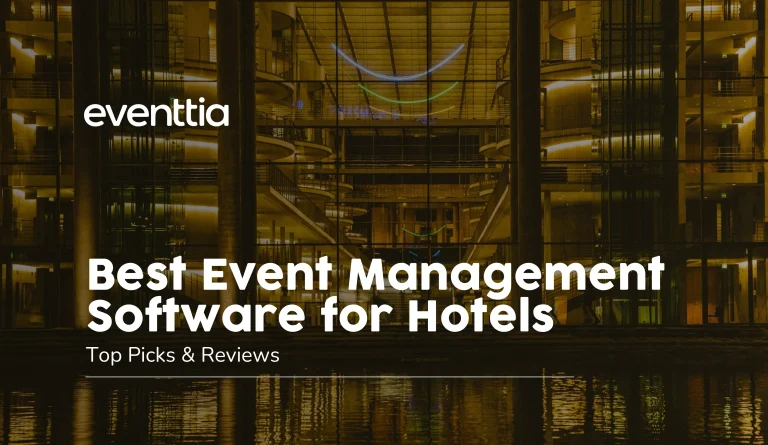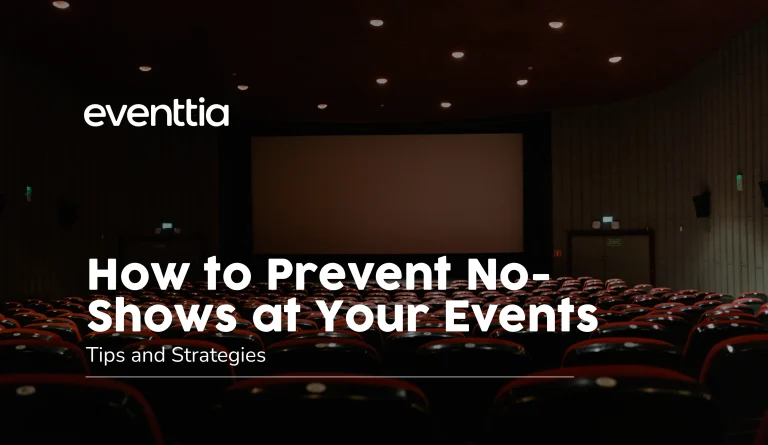It’s crazy to think how much the events industry has evolved in recent times.
Events have moved online and it didn’t take long for us to realise that we can reach untapped audiences while keeping costs down.
Whether it’s a yoga session, interactive panel discussion or virtual conference, the popularity of virtual events has exploded and it is paving the way for new forms of communication and collaboration.
To help you get the most out of this, we’ve drawn up this short guide to answer all of your questions on virtual events.
What is a virtual event?
A virtual event is an online version of a physical event. As you will see, they come in all shapes and sizes, covering anything from tutorials and interviews to webinars and conferences. With the help of technology and features such as live chat, networking, and webinars, virtual events make it easier to connect with a global audience while reducing costs.
Different types of virtual event
When it comes to virtual events there are plenty of options at your disposal. Here are four of the most common virtual events. Of course, each one comes with its own uses and features. That’s why before planning any virtual event you’ll want to know its application.
Webinars
A familiar tool to every marketer, a webinar is a web-based seminar. The normal procedure is for a host to be joined by one or more presenters to discuss a topic for a set amount of time, usually around the hour mark. They offer a collaborative and interactive platform for you to connect with your attendees in an intimate setting. This makes them particularly well suited to learning and education, especially when you utilise interactive features such as whiteboards, surveys, and live chat.
Live streaming
Unlike pre-recorded videos that can be cut and edited, live streaming is completely (you guessed it) live. Viewers can watch the event as it unfolds, making it feel as if they’re in attendance, hence why it is such a great combination when matched with social media. Moreover, it’s a great way to engage viewers with authentic content that will generate a buzz. Popular use cases include product launches, interviews, and press conferences.
Virtual conferences
A virtual conference is just like any other conference with the difference being that it’s done entirely online. From tutorials and networking to press conferences and keynotes, virtual conferences are made up of multiple sessions made possible by live streams and on-demand video content. Through features such as live chat, polls, and Q&As, virtual conferences are highly interactive and aim to create an experience similar to their physical counterpart.
Hybrid events


A hybrid event combines elements of physical and virtual events into one. This means that live and virtual audiences can participate and interact together. A best of both worlds scenario which offsets the disadvantages of both types of events, hybrid events allow a bigger audience that can attend in physical or virtual form. A great example of this is last year’s SXSW, where attendees could virtually interact across 4 different venues in Austin.
Why host a virtual event?
To clear things up, the fundamentals of event marketing are still very much the same when it comes to virtual events. Of course, the physical interaction is gone but the end goals of generating leads, building brand awareness, and boosting customer loyalty are still very much the same, and very much achievable. Beyond this, here are the main reasons why virtual events offer something different:
- Accessibility: To attend a virtual event you need two things: a computer or mobile and an internet connection. People from any location can instantly join, allowing you to reach out to an international audience and connect with people from around the world.
- Lower costs: Without the venue and all of the other costs that come with it such as staffing, travel, and catering, virtual events offer a much more cost effective way of connecting with your audience (75% less expensive to be exact).
- Save time: There is a lot less to think about when it comes to virtual events. The two main priorities are the content and how you’re going to deliver this in a seamless experience to your attendees by using the right technology.
- Flexibility: Away from the confines of a venue, virtual events offer a lot more flexibility. Regardless of what type of event you’re hosting, you’ll have the option of live or pre-recorded content, different engagement tools, and different language options, to name a few.
- Sustainability: The carbon footprint of a virtual is comparatively lower than that of a physical event. There is no travelling required and there is no wastage from catering and printing that you would find with a venue.
- Easily measure data: By being able to monitor the most popular sessions, where attendees were most engaged, and how long attendees stayed at each session, virtual events make it much easier to measure your data.
The three main differences between physical and virtual events
There are no surprises here, but the physical and virtual environments have a big impact on the final outcome of the event. That’s why physical events are always going to be better for networking and engagement, whereas virtual events are going to be better for content. To help understand this better here are the three main differences between physical and virtual events.
- The timeline: An in-person event will have a structured and linear timeline. Usually, a face-to-face event can span from one day to several, with multiple dynamics such as round tables, keynote speeches, workshops, and networking sessions. These dynamics usually fill the entire day.
An online event, however, doesn’t require a linear timeline. You can have a one-hour online event or a three-day online event, with one keynote speech per day. While a face-to-face event revolves around a packed agenda and keeping the attendees engaged from morning to evening, online events are less structured.
- The venue: Any physical venue has to be hosted at a venue. But this is not the case for online events. This element provides you with a certain degree of flexibility. Just think about it: To attend your event, people had to travel from different countries or cities. The venue is physically conditioned, meaning space is an important component.
The reach of your event is limited to the space itself since venues can only accommodate a limited number of attendees. Online events, however, are limitless. Online platforms allow you to reach out to an international audience and connect with people from around the world.
- Experience: With live events, you have a physical experience. You have to travel, get to the venue, and enjoy a fully packed day. Your senses are involved in the experience, and you’re dedicated to learning as much as you can throughout the day.
During online events, however, you can’t keep one person focused on the screen of their laptop or smartphone for an entire day. Sure, you can pack a 10-hour online event into one day, but chances are your attendees will disconnect (physically and/or mentally) after one or two hours.
When running online events, it’s important to consider people’s online behaviours. Even during in-person events, people will lose their attention from time to time and start scrolling through their social media feeds. When attending an online event, however, it’s a million times easier to be distracted or simply turn off the computer. So you’ll want to find ways to make your event as engaging as possible.
The four components of a virtual event
As you’ve just seen, the DNA of a virtual event is inherently different to that of its physical counterpart and this has a big say on where your priorities should lie. Here are the four areas that you need to think about the most:
- Promotion: Virtual events equate to more reach and bigger audiences, but without the right promotion that’s never going to happen. Think about the different elements that can be used to promote the event (there are lots out there) such as the landing page, social media, email campaigns, to name a few.
- Content: Virtual events are all about the content. More specifically they’re about providing attendees with variety and value. This is the main priority for every session at your event. A lot of thought needs to go into your speakers and what meaningful content they can bring to the event.
- Engagement: Without human interaction, virtual events require us to think outside of the box when it comes to engagement. This means putting a big emphasis on tools such as live chat, polls, and quizzes to keep attendees engaged and away from the many online distractions out there.
- Technology: Not only does technology bind all of the components of a virtual event together but it also makes the difference between a low-quality and high-quality event. From the landing page through to streaming and tracking data, technology is what makes virtual events possible.
Logistics
The components of a virtual event have a big say on how a virtual event is executed. Here are the main areas of attention that you’ll need to allocate your attention to when planning for your virtual event’s logistics.
Pre-event
Landing page: An online event landing page is designed specifically to get your visitors to register for your event. It needs to be well designed with powerful messaging and branding that also includes any key information regarding the event.
Registration: To turn contacts into attendees you need a smooth and reliable registration process. This should take no longer than 5 minutes and should only require attendees to enter in the basics like name, email address, billing information, and preference choices.
Collecting fees: If you’re monetizing your event, you’ll want to have multiple payment options, meaning credit and debit cards along with online payment options such as PayPal and Google Pay.
Email campaigns: Email is the easiest way to communicate with your attendees. It provides a great platform to promote your event, educate your attendees, answer any of their questions, and provide them with the right information.
During the event
Equipment: Having the right equipment ensures that you’ll be delivering high-quality content throughout the virtual event. Every piece of tech such as cameras, microphones, and computers needs to be running smoothly.
Virtual stage: The virtual stage is where all of the big conversations take place; this can be in the form of keynotes, product launches, or interviews. For the attendees, this is about absorbing valuable content in a ‘one-to-many’ format.
Virtual lounge: A place where participants can connect in a virtual room via chat windows and live video, this allows attendees to feel familiar aspects of event spaces through a virtual environment
Virtual networking: Networking is a key part of any event, so be sure to give your attendees plenty of time to mingle. This allows attendees to engage in real-time chats and discussions via virtual meeting rooms and breakout sessions.
Chat: Live chat provides a space for people to interact, share their thoughts, and discuss the event in real-time. To make this a real success, make sure to add moderators that will facilitate the conversation.
Pre-recorded and live sessions: Offer varied content by having both different types of content available. Pre-recorded content saves you time before the event while live content is a lot more engaging, working perfectly for keynotes.
Technology integrations: It’s important to Identify what tech you’re going to be using for the different parts of your events and how all of this is going to be integrated into a seamlessly run event.
Engagement tools: Live polls, quizzes, and other tools are a key part of the virtual attendee experience. Without any human interaction, these tools are going to be the main source of engagement at your virtual event.
Post-event
Online surveys: It’s hard to say exactly how your event went without seeking feedback from the people that were there. That’s why you should always send out a survey immediately after the event. This will give you greater insight into future virtual events.
Repurpose any content: To ensure that attendees are still engaged with your brand long after the event, make sure to repurpose all of the content that you’ve collated. This could be in the form of a new podcast series or a series of video snippets from your keynotes.
Email sequences: To build a stronger relationship with your attendees, combine all of the repurposed content that you have in email sequences so that you can continue to engage and nurture with them.
Technology components
Running an event from A to Z requires multiple technologies, below are the most important pieces to delivering virtual events.
Website builders: Your website sets the tone for your event and provides potential attendees with the first glimpse of your event. For this reason, it needs to be well-made and professional. Every event website needs to include logistics and communicate the value of the event.
Registration software: To ensure a seamless registration, you’ll want to find a tool that allows attendees to register, submit personal information, and provide payment (if necessary). This process needs to be user-friendly and intuitive without any complications.
Email marketing tools: To promote your event and communicate with contacts, you’ll want to use an email marketing tool. By sending branded and personalized emails, you will have a lot more control both in terms of outreach and with tracking key metrics.
Live streaming software: Keynotes, Q&As, and all your other ‘one-to-many’ sessions will need to be broadcast to your attendees via live-streaming platforms. For your attendees, this is more about absorbing content and less about interacting.
Webinar platforms: For the more collaborative and interactive sessions such as breakouts, workshops and interviews, use a webinar platform that can offer visual elements like slide sharing, surveys, and whiteboards.
Engagement tools: To keep attendees engaged throughout the event you’ll want to add engagement tools such as live polling and quizzes. Here, it’s worth considering the setup and whether attendees need to download anything prior to the event.
Event planning software: This integrates all of the different technologies that we just mentioned, providing you with one platform where you can track data, streamline planning, and offer attendees a smoother guest experience.
How to approach event virtual event technology
So as you can see each of the technologies that we mentioned represents the different components of a virtual event. Whether that’s website builders or live streaming software and chat tools, the technology behind each feature is what makes virtual events happen.
For this reason, if you want to have a well-run event there’s no picking and choosing – you’ll want to have every one of these technologies integrated into your virtual event tech stack. Here’s how to do it:
Option 1: Building your virtual event from scratch
This means building your event from the bottom up by partnering up with multiple providers across each stage of the virtual event life-cycle. This is definitely an approach for more experienced event marketers who want to create their own custom-made events tailored specifically to their needs.
To give you an idea of what technologies you’ll want to use, the first step in this approach should always be to microdissect the event so that you can map it out. Once you’ve done this, you’ll need to identify your providers for each component of the event, making sure that they’re fully compatible and integrate with each other.
Option 2: Using an all-in-one virtual event platform
The more straightforward option is to use an all-in-one virtual event platform, like Eventtia. This will give your virtual event much-needed consistency as it provides a place where all of the different technologies can be integrated into one platform.
This is going to save you a lot of time, especially if you’re managing multiple events.
Giving you some much-needed structure and making the planning process a lot more straightforward. This all contributes to saving you a lot of time in the process.
No longer will you have to map out the event, create multiple accounts, and make sure that they work, because an all-in-one platform does all of this for you.
Virtual event objectives and strategy
Your virtual event strategy is exactly what sets you up to succeed well into the future. This is the framework that makes decisions and sets up actions, ensuring that everything you do is well-aligned with your initial intentions.
In other words, it’s your master plan that you’ll be following when planning your event. This is what’s going to help you stay focused, avoid wasting time on the things that don’t matter, and ensure that you design actions that exclusively serve your goals.
Here are five elements to your virtual event strategy:
- Align your virtual events strategy with your business goals
Regardless of all the different reasons for hosting virtual events, if they’re not aligned with your overall business goals then you’re not going to be able to reap the rewards. That’s why rule number one should always be to identify what it is you want to achieve and more importantly, whether this is going to have a positive impact on your business goals.
- Identify your ideal target group and identify their biggest challenges
The more you know about your attendees, the more value you can create by designing an event designed specifically to their requirements. You’ll be able to answer the biggest challenges that they’re facing and with this, you’ll be creating relevant virtual events that are going to spark interest with your attendees.
- Decide the structure, the format, and the branding of your virtual events
It’s vital to connect the dots between the overarching objectives and the more specific details as this is what will give you the structure, format, and branding. Always have a clear understanding of what you want your virtual events to look like and what’s going to differentiate them from all the others out there.
- Agree upon the frequency and the promotion of your virtual events
Is your event going to be a one-off or are you planning to run a series of events? The answer to this question will determine how much time and effort goes into planning and where attention should be diverted to. It’s also important to bear in mind your own capabilities and how big your marketing department is.
- Identify the KPIs you’ll be tracking and the ROI you’re expecting from your virtual events strategy
When planning your virtual event, it’s vital to factor in KPIs along with what your ROI should be. Ask yourself questions such as: Do you want to focus on building brand awareness or driving sales revenue? Or, if you decide to drive sales revenue, do you then want to generate leads or generate pipeline value?
Planning your first virtual event
The number one goal of every virtual event should always be to ensure a high-quality event for your attendees. But how do you do this? And what are some of the things that you should consider to make this happen when running your first online event? Here are a few elements you’ll want to discuss with your team:
- Identify your virtual attendee profile
Define your online event audience in the same way that you would when you define a specific buyer and attendee profile for your in-situ events. By knowing who your virtual attendees are, you’ll be able to come up with relevant content and develop a program that fits their needs, which in turn will give you a good virtual attendance rate.
- Design a higher engagement experience
The best way to maintain people’s attention during online events is by creating a clear engagement strategy. Run polls and quizzes and make sure to break things up. All these little engagement tactics will make people pay more attention to your online event and have a better event experience.
- Give your virtual attendees the opportunity to network
To guarantee a high-quality experience, use an online events platform with a virtual networking feature. With the right tools, your guests will be able to interact with each other and even schedule one-on-one meetings in networking rooms. This will add value to your event and enhance the experience.
- Design memorable virtual brand experiences
Providing attendees with a memorable virtual brand experience depends on the characteristics of your brand and your products or services. For example, if you’re a company producing alcoholic beverages, you can run an online cocktail class. The key is to think about how to transform the uniqueness of your brand into an exciting online experience.
- Continue providing value after the event
There are lots of ways to repurpose, improve, and repackage your online event content for further lead nurturing and value production. You could create a video series that contains important insights from your speakers or you could create an ebook. Whatever you decide, there are always plenty of opportunities to keep creating value long after an event is over.
Virtual attendee engagement
The online world is full of distractions. Whether that’s replying to emails, scrolling through Facebook, or watching videos on YouTube, all of these distractions are just one click away.
Understandably then, virtual events have a lot of competition and as a result, that’s left many of us asking ourselves: “Is it really possible to keep attendees engaged at virtual events?” The answer is yes, and here are some tips on how to make it happen:
Ask plenty of questions
You need to communicate with your attendees and make them feel like they’re there at the event with you. Ask plenty of questions, and no, they don’t need to be complicated. What do you think? What would you do? How would you change this? Just make sure they’re open-ended questions that encourage critical thinking and active participation amongst your attendees.
Encourage attendees to ask questions and read those questions
The best way for this to happen is through the live chat feature which should accompany almost all of your event sessions. To get the most out of this, make sure to have moderators that can guide the conversation, that way you’ll ensure that attendees get the most out of the session that they’re participating in.
Make it interactive
Technology is literally the be-all and end-all of a virtual event and even better, it’s a great tool to encourage participation and engagement. Polls, chats, and quizzes are just some of the ways that you can break down the barriers between you and your audience. The best thing is that all of these interactive features will give you results in real-time.
Make it fun
Adding fun elements across the event is a sure-fire way to boost engagement. Again, there are plenty of options out there. The most popular being gamification through techniques such as trivia, quizzes, and content. To take this one step further, you can also include prizes as a way to encourage participation.
Have multiple breaks and very short sessions
To accommodate the attention spans of your attendees, create bitesize content. Simplicity is key here, so go through your event agenda and identify how you can deliver your content into digestible chunks. This could mean sharing one key message per slide on a presentation or offering your attendees a live experience.
Virtual networking
Virtual networking allows attendees to engage in real-time chats and discussions in virtual meeting rooms and breakout sessions throughout the event. This provides an opportunity for attendees to create better and closer connections putting them in front of like-minded people.
Moreover, it means that attendees can engage in real-time chats and discussions along through
virtual meeting rooms and breakout sessions. Here, the focus is on creating better and closer connections amongst attendees. This means putting attendees in front of the people they want to know. To understand how it works, here are the five characteristics of virtual networking:
- To attend you need to meet the criteria
Online networking is about creating opportunities for attendees to meet with others who share similar interests. By doing so, participants can get the most out of their meeting and have peace of mind that they’ll be participating in a high-quality meeting that is going to be beneficial to all parties involved.
- It happens during an online event
Networking is one of the many components that form an online event. That’s why when you add it to the agenda with keynotes, breakout sessions, and other sessions you create the full experience for your attendees.
- It ensures a connection between demand and supply
Online networking ensures that the right attendees are meeting with each other. This is done with networking profiles which are filled out by attendees before the event which in turn, streamlines the meeting process and ensures that no attendees are wasting their time speaking to the wrong people.
- It comes as a sequence of multiple one-on-one meetings during a specific timeline
The final aspect worth mentioning is that online networking is composed of multiple meetings or sessions within a specific timeline. Normally this is leveraged into the agenda as a breakout session to provide some variety away from all of the other content.
Best practices for your data
All of the technology that comes with virtual events means that you’ll have more access to data than before, providing you with some extremely valuable insight. Even better is that fact if you’re used to collecting data for previous events, then this will be very familiar to you, with the only difference being what happens during the event.
Pre-event
Tracking metrics pre-event really is no different. Email open rates, social media engagement, and click-throughs are all just as relevant. This is what will give you a clear view of who’s interested in your event, whether you’re reaching the right people, and more generally, how effective your promotion strategy is.
During the event
To get a real understanding of what’s going on it’s important to use all of the technology at your disposal. Compared to live events this makes tracking engagement significantly easier because you can see how many people are attending sessions and for how long. Moreover, you can use tools such as live polling, Q&As and surveys to get feedback on your content in real-time.
Post-event
The first thing you should do after the event is to send out a survey to your attendees. Combine this with all of the information that you’ve collected during the event and you should have a clear understanding of where you need to improve for your next event and how you can strengthen moving forward.
Key Takeaways
Event marketing is changing as we know it and with that comes new opportunities. We’re already seeing how virtual events are a great way to connect and communicate with global audiences as physical events remain off-limits for the time being.
- As more and more companies start to use virtual events, it’s important to differentiate yourself from everything else out there.
- Don’t just jump into virtual events without doing your research. Identify what type of virtual event you want to run and more importantly, make sure that it’s the right fit for your attendees.
- Without the right technology in place, your content is never going to be delivered to its fullest potential. That’s why you need to make sure that you have a good understanding of how each component works and what it brings to the table.
- It’s important to realise that a virtual event is never going to be able to replicate a physical event. This means that you need to spend a lot of time thinking about engagement and networking and how best you can transfer this over to an online environment.
Discover how Eventtia helps world-leading brands digitize and scale their events
Learn more
Share

